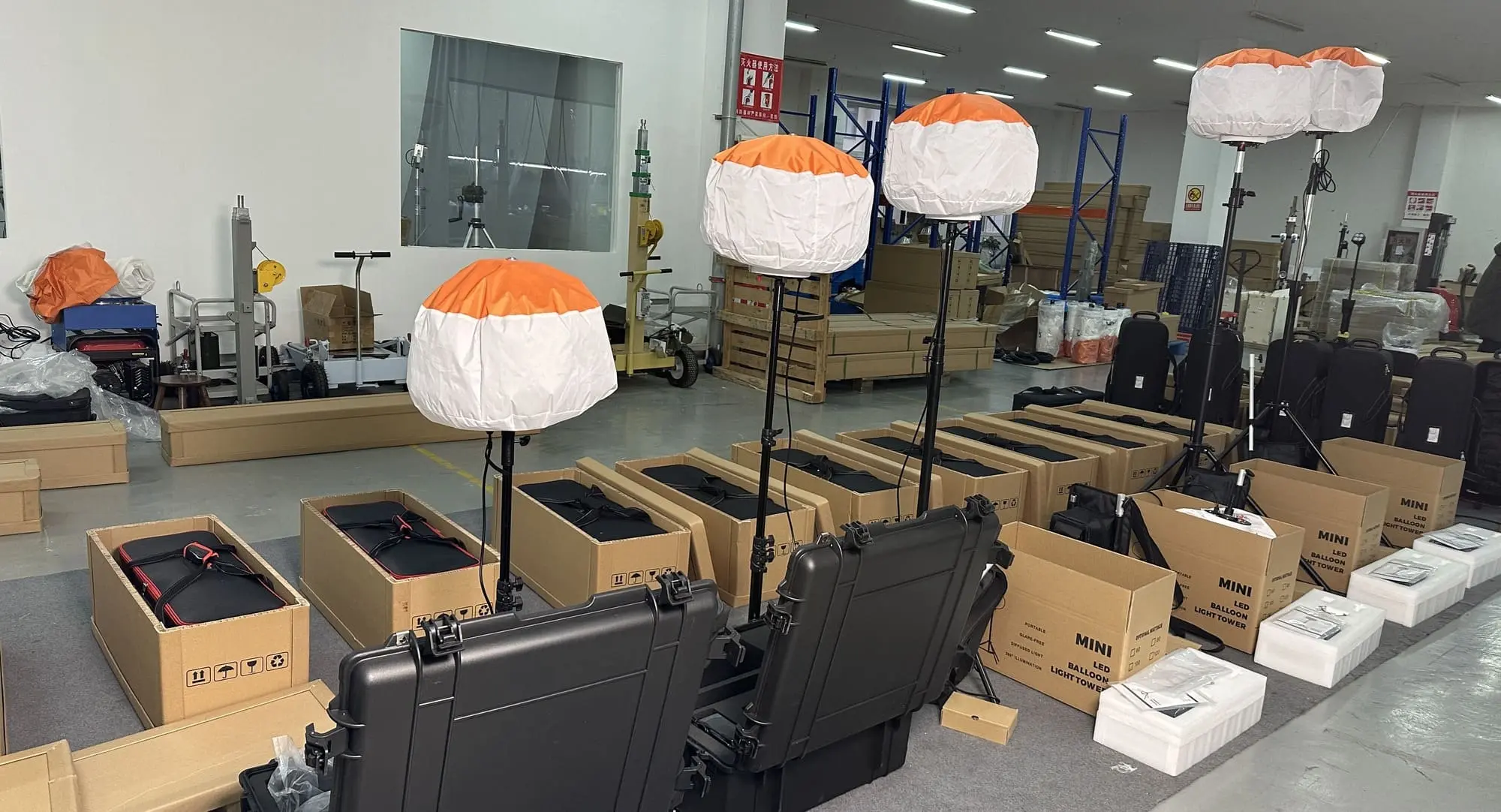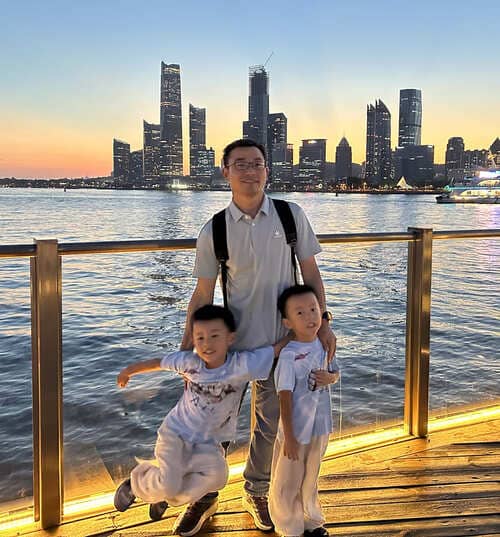Every project is different. I’ve seen lighting setups fail just because the fixture didn’t fit the real site needs. Choosing right means everything works.
To choose the right balloon light fixture1, consider your site conditions2, the lighting area required3, mounting options4, power source availability5, budget6, and whether you need customization7 for specific tasks.

I’ve picked the wrong lights before. I learned the hard way that just looking at brightness isn’t enough. Think about how and where you’ll use it. This guide helps you pick the best option by breaking it all down clearly.
What’s the Environment of Your Project Site?
I once tried using a small portable light in a muddy road construction zone. It sank and failed. The environment makes or breaks your light’s performance.
Think about where you're working: indoor, outdoor, on a mountain, in a tunnel, or at a large open area. Each environment demands different lighting coverage and fixture protection levels.

Dive deeper Paragraph:
You must first ask, what’s the size of the area that needs light? A tunnel? Then narrow beams and high intensity matter. A field or road? Then soft, wide spread light matters. The harsher the weather, the tougher the fixture should be. In places with rain or dust, IP65-rated balloon lights8 resist water and particles. I prefer glare-free types9 for safety zones like roadwork or rescue. If your project includes work at night, glare is a big risk. Balloon lights with fabric covers diffuse light evenly to reduce that.
| Environment Type | Fixture Needed | Notes |
|---|---|---|
| Road construction | Glare-free wide coverage | Should be portable and stable |
| Tunnels | High-intensity beam focus | Compact with clear visibility |
| Forest or rough site | Rugged, water-proof design | Diesel or high-power options |
| Indoor venues | Low noise, compact form | Prefer battery/DC powered10 |
What Mounting Method Fits Your Setup?
I worked a job where we mounted lights on a paver. Another time we had to use tripods in a wedding event. Mounting changes everything.
Choose from machine-mounted, tripod-mounted, cart-mounted, or diesel trailer-mounted balloon lights based on your site mobility and stability needs.

Dive deeper Paragraph:
Tripod-mounted balloon lights are quick to deploy. They work best on flat terrain and small to medium areas. Machine-mounted ones are great for roadwork. I’ve fixed these to rollers, pavers, or excavators. They light your path and move with your vehicle.
Cart-mounted balloon lights give more mobility. You can roll them across job sites. Diesel trailer-mounted lights are for the biggest setups. These light entire zones and run for hours or days. But they need towing and space.
| Mounting Type | Best For | Considerations |
|---|---|---|
| Tripod-mounted | Events, rescue, small jobs | Easy setup, height adjustable |
| Machine-mounted | Road construction | Moves with the machine |
| Cart-mounted | Medium job sites | Needs flat terrain |
| Diesel trailer-mounted | Large-scale outdoor work | Long runtime, wide coverage |
What Power Supply Do You Have?
One time I brought AC-only lights to a remote site with no grid. Big mistake. Power supply limits what you can use.
Know your power source: AC for grid-connected sites, DC for battery or vehicle setups, or diesel generators for long-term large jobs.

Dive deeper Paragraph:
Balloon lights run on AC or DC. If your site has outlets, AC lights are easy to run. On remote sites or vehicles, DC-powered models or internal battery models are better. They need no extra power cords.
If your project spans several days, or lights run all night, diesel light towers are the go-to. They keep going when batteries die. I’ve used Moonlightia diesel models for big rescue zones. You don’t worry about outages.
| Power Type | Best Use | Limitations |
|---|---|---|
| AC Power | Events, indoor, grid areas | Needs stable grid or generator |
| DC Power | Remote or vehicle jobs | Shorter runtime unless battery is big |
| Diesel Power | Long-term, high-output needs | Heavy, needs refueling and trailer |
What’s Your Budget?
I’ve seen projects overpay for light they didn’t use. I’ve also seen underpowered lights stall work. Budget must match purpose.
Your budget6 should cover fixture, setup, and long-term operation. Higher cost doesn’t always mean better – it means different features.

Dive deeper Paragraph:
Airstar models can go over $3,000. They’re top-grade, good for national-scale rescue and government work. If you’re lighting a small construction or wedding site, that may be overkill. Moonlightia offers hardcase balloon lights under $1,000. For short jobs or quick setups, that saves big money.
Also consider lifetime cost. Cheaper lights with weak materials might fail fast. Durable, IP-rated lights last years. Choose based on expected use. Will this run monthly, weekly, or only once? That changes what makes sense to spend.
| Budget Level | Ideal Use | Brands/Models to Consider |
|---|---|---|
| Low ($500–$1,000) | Short-term, small-area lighting | Moonlightia Hardcase 120W |
| Medium ($1,000–$2,500) | Reliable daily work lighting | Moonlightia Pro 1000W |
| High ($3,000+) | Emergency services, pro events | Airstar Sirocco Series |
Do You Need Customization?
A client once asked for green balloon light for a brand event. Another wanted silent DC models for animal rescue work. Custom touches matter.
You may need custom branding, color temperature11, mounting hardware, or special light intensity12. Not every supplier offers this.

Dive deeper Paragraph:
If your project has branding needs, like festivals or exhibitions, you may want color options or logo printing. Some events want warmer light, others need daylight tone. Make sure your supplier offers this.
For road construction, you might need mounts that fit specific rollers or cranes. Moonlightia does OEM and ODM customization13n](https://moonlightia.com/moonlightias-rgb-balloon-lights-key-features-that-outshine-the-competition/)[^7]. That helped me deliver a fully branded light for a fire department. Always ask what’s possible. Some companies offer zero customization7 or set high minimum orders.
| Customization Type | Use Case | Supplier Tips |
|---|---|---|
| Logo/Color Branding | Events, corporate functions | Look for OEM support |
| Special Mounts | Equipment-mounted setups | Provide machine specs to the supplier |
| Power Configurations | AC/DC combos, internal batteries | Clarify battery needs and runtime |
| Light Tuning | Cool vs warm color temperature11s | Ask for adjustable options |
Conclusion
Choosing the right balloon light means matching the light’s strengths with your site, power, budget6, and goals. Get that right, and your project stays bright and safe.
-
Explore this link to understand the unique features and applications of balloon light fixtures. ↩
-
Learn how different site conditions can impact your lighting decisions for better project outcomes. ↩
-
This resource will help you assess the lighting needs based on your project's area. ↩
-
Discover various mounting methods to find the best fit for your project setup. ↩
-
Understand the different power options to ensure your lighting setup is efficient. ↩
-
Get insights on budgeting for lighting to avoid overspending or underpowering your project. ↩ ↩ ↩
-
Explore customization possibilities to tailor lighting solutions to your specific needs. ↩ ↩
-
Find out how IP ratings affect the durability and performance of lighting fixtures. ↩
-
Learn about glare-free lighting and its significance for safety in various environments. ↩
-
Explore the benefits of battery and DC powered lights for remote job sites. ↩
-
Understand how color temperature affects the ambiance and functionality of lighting. ↩ ↩
-
Learn about the impact of light intensity on visibility and safety in various settings. ↩
-
Explore how OEM and ODM options can enhance your lighting solutions for specific needs. ↩




